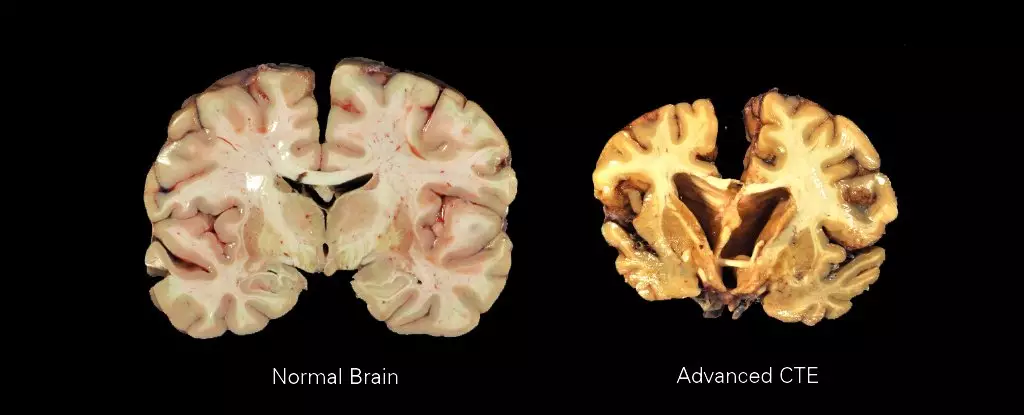Rugby is a physically demanding sport that is known for its high intensity and contact. However, a new study has found that the repeated head knocks sustained in the sport can increase the risk of players developing chronic traumatic encephalopathy (CTE). CTE is a degenerative brain disease that is thought to be a result of repeated head injuries that damage the brain’s tissues by slamming it into the side of the skull. While a diagnosis can only be made after death, CTE often manifests in later life as memory problems, mood changes, depression, and dementia. Shockingly, even young individuals as young as 17 have been diagnosed with the condition.
A High Prevalence of CTE in Rugby Players
The study analyzed the brains of 31 former rugby union players who had donated their brains to research. The results were alarming, with two-thirds (68%) of the brains examined by neuropathologists showing signs of CTE. What’s more, the risk of developing CTE was found to be linked to the length of a player’s rugby career. For each additional year of play, the risk of CTE increased by 14 percent. This indicates that the accumulation of non-concussive head knocks over a player’s career can result in brain changes that lead to CTE.
The study’s author, Ann McKee, emphasizes the need for preventive measures to reduce the risk of CTE in rugby and other contact sports. McKee asserts that CTE is a preventable disease and calls for a reduction in both the number and strength of head impacts. This is not only crucial for rugby but for all contact sports, where athletes are at risk of sustaining repeated head injuries. By taking proactive steps to protect players and prevent CTE, the long-term impact on their health can be minimized.
While this study focused on rugby, the evidence regarding head knocks and CTE risk extends to other contact sports as well. Previous studies involving NFL players found that over 90 percent of ex-NFL athletes who underwent post-mortem examinations were diagnosed with CTE. Now, studies on soccer, Australian rules football (AFL), and rugby players are yielding similarly alarming results.
It is worth noting that rugby union has a notably high risk of concussion compared to other contact sports. However, the number of documented cases of CTE in former rugby players has been relatively low. This study adds to the existing body of research but acknowledges that the strongest evidence linking contact sports to neurodegeneration still comes from professional or elite players.
As our understanding of CTE and its risk factors continues to grow, it is clear that the biggest risk factor is repeated hits to the head, regardless of whether or not concussion symptoms are present. Further research has shown that even multiple ‘mild’ head injuries can lead to memory problems and other cognitive deficits. This highlights the urgent need for changes in how contact sports are played and practiced to minimize the risk of CTE.
A study conducted in June involving 631 deceased football players, which is the largest CTE study to date, found that NFL players’ chances of developing CTE were linked to the number and strength of head impacts, as well as the length of their careers. Surprisingly, the number of full-blown concussions they sustained did not have a significant impact on the development of CTE. These findings suggest that changes in the way football players practice and play could potentially reduce the risk of CTE.
It is evident that the dangers of repeated head knocks in rugby and other contact sports cannot be ignored. The results from this study serve as a wake-up call for athletes, coaches, and sports organizations to prioritize the safety and well-being of players. By implementing preventive measures and raising awareness about the risks associated with repeated head injuries, we can work towards ensuring the long-term health of athletes and reducing the prevalence of CTE in contact sports.


Leave a Reply